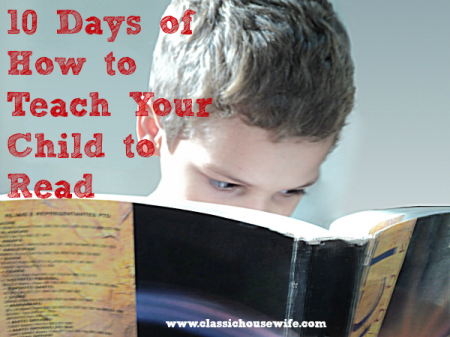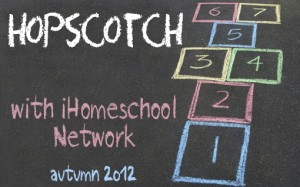
Kinesthetic Tactile Learners
{Our 10 Day series got interrupted 3 days before it’s conclusion. Here’s the next installment, Day #7 of 10.}
If you have a child who has to move to think, who has to touch it to learn about it, who has to remake, rebuild it, redo it after you’ve learned it, you will know what I mean when I say that these kinesthetic tactile learners are truly a special and entertaining sort of learner. On one hand, teaching them is easy, because you just need to give them something to DO. On the other hand, it’s not so easy when they need something to DO and DO and DO.. they can keep you on your toes!
Teaching these kids to read can be particularly challenging when they lose interest because sitting down and reading is boring, or when you can’t keep them in their chair long enough to try, or when their brain is off inventing the latest mode of transportation and their hands are itching to go build it with legos. But with a few tips, teaching these movers and shakers to read can become a little bit easier.
Kinesthetic/Tactile Learners in a Nutshell:
- learn best through movement of gross or fine motor muscles (this article explains the difference between the kinesthetic/gross motor and tactile/fine motor learning styles.)
- like to figure out how to do something, may want to see you do it first and then try it on their own
- may benefit from re-enacting or role playing the lesson
- like manipulatives – letter tiles, math manipulatives, magnetic words, etc.
- need to move – let them wiggle, stand, stretch between lessons, etc.
- may not look like they are paying attention when they really are
- prefer shorter lessons
- benefit from physical activity such as warming up with jumping jacks or carrying heavy books for the teacher
- may benefit from writing information down – let them help make their own flash cards, charts, etc.
- like games, from board games to acting out a game show to playing a computer game
- enjoy experiments and other hands on projects
- probably need to keep their hands busy
- like to create things
Does any of this sound familiar? I immediately think of my little boy!
So if you’re mover and shaker doesn’t like to sit still to learn and think, or sometimes CAN’T sit still and learn at the same time,… what can you do to help him or her learn to read while appealing to his learning style?
Tips for Teaching Reading to Kinesthetic/Tactile Learners
- Let him move! Set some boundaries and define which types of movement are allowed during a reading lesson. Standing and walking around might not be allowed, but sitting in a child-sized rocking chair may help.
- Make use of hands on manipulatives – tiles or cards for letters or word families.
- Use dry erase boards or chalkboards, have them write letters you dictate to spell letters or short words, read them aloud, erase them, write the next one, etc.
- Let them follow words on the page with their finger (if you’re worried about it becoming a crutch, it won’t last forever and it will help them focus on the word at hand.)
- Make it a game! For example, place word cards on the floor and have her jump from card to card as you call them out to make a sentence.
- Keep lessons short. As soon as the need to get up and move overpowers the ability to stay focused on the lesson, put the lesson down and do something active. You can always come back to the lesson later if you need to do that.
- Let him play with quiet hands on distractions (such as pipe cleaners, play doh or sensory balloons) while you read to him to help him pay attention. (Reading interesting stories aloud is a good way to foster interest in reading in general! If they have to sit still they may begin to think of reading as “boring” and we don’t want that!)
Teaching these very active learners does require a little bit of preparation on our part but these active learners can also make teaching and learning very, very fun!
Have a kinethetic/tactile learner? What tips do you have for teaching these entertaining learners?
Just joining in? Start at the beginning. (It’s a very good place to start.)
This series is a part of a blog hop called “The Hopscotch” through iHomeschool Network (previously known as “the ten days of” series.) HOP on over and hopscotch through all the other 10 Days series. While you’re there, check out the Pin it to Win It contest featuring a giveaway of products from Prufrock Press.
If you’d like to read more posts related to reading, then you may want to check out Marianne’s Homeschooling with Dyslexia, Mary’s 10 Days of Reading Aloud, or Becky’s Teaching Spelling Through Word Study!
Image Source: Young Reader by Francisco Farias Jr




